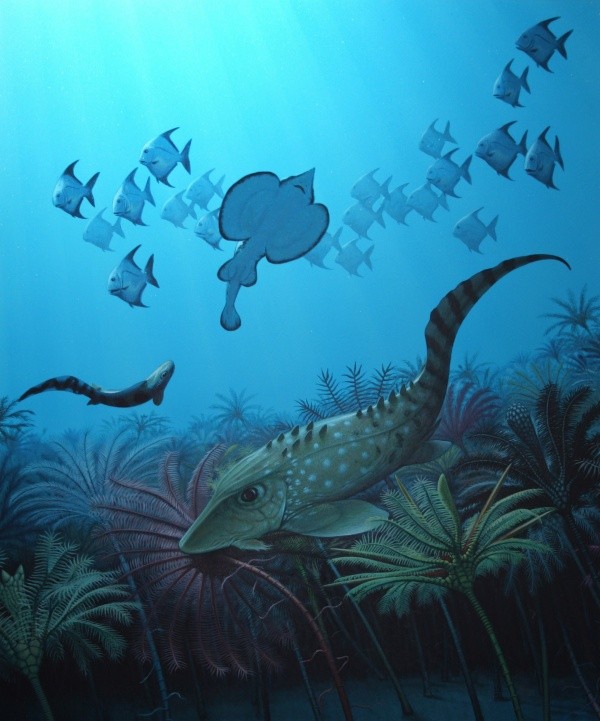New research reveals how larger species of fish, especially marine predators, usually possess better survival skills in the sea however, in the event of a catastrophe such as an asteroid impact leading to mass extinctions, smaller species may actually survive their predatory counterparts.
This new study examined some fossilized records that suggests how smaller and faster reproducing fish apparently have the evolutionary advantage as opposed to their larger counterparts during a post extinction event.
According to paleontologist, Lauren Sallan of the University Of Pennsylvania, the team noticed that the fish that were dominant during the Mississippian Period some 350 million to 323 million years ago were smaller in size than their ancestors.
In the past, paleontologists have already noted that some species have the tendency to shrink in size over time, as this phenomenon is known as the Lilliput effect. Researchers also noticed a trend where this effect occurs after massive and often abrupt extinctions.
Sallan says that the Hangenberg mass extinction event that happened some 359 million years ago was so crucial that it dramatically changed the planet's vertebrates. There were larger marine animals that dominated the oceans however at least 40 million years after this event, smaller fish inhabited and became the norm for oceans.
Along with Andrew Galimberti from the University of Maine, Sallan conducted an investigation of body size trends that occurred during the Hangenberg Event by examining a dataset consisting of more than 1,000 fish fossils that lived some 419 to 323 million years ago.
Apart from this, the researchers also examined museum specimens and photographs along with other published papers to gain more information about fish body sizes where they concluded that the vertebrate size increased during the Devonian period some 419 to 359 million years ago.
The prehistoric fish species during those times vary, as some were as large as a school bus during this period and even if there were smaller vertebrates already thriving, most of these species measure at least one meter long.
This mass extinction event also wiped out 97 percent of the vertebrate species on Earth resulting in the most profound die-offs, that led to declining body size of marine animals that continued for millions of years. This new study is published in the journal, Science.



























